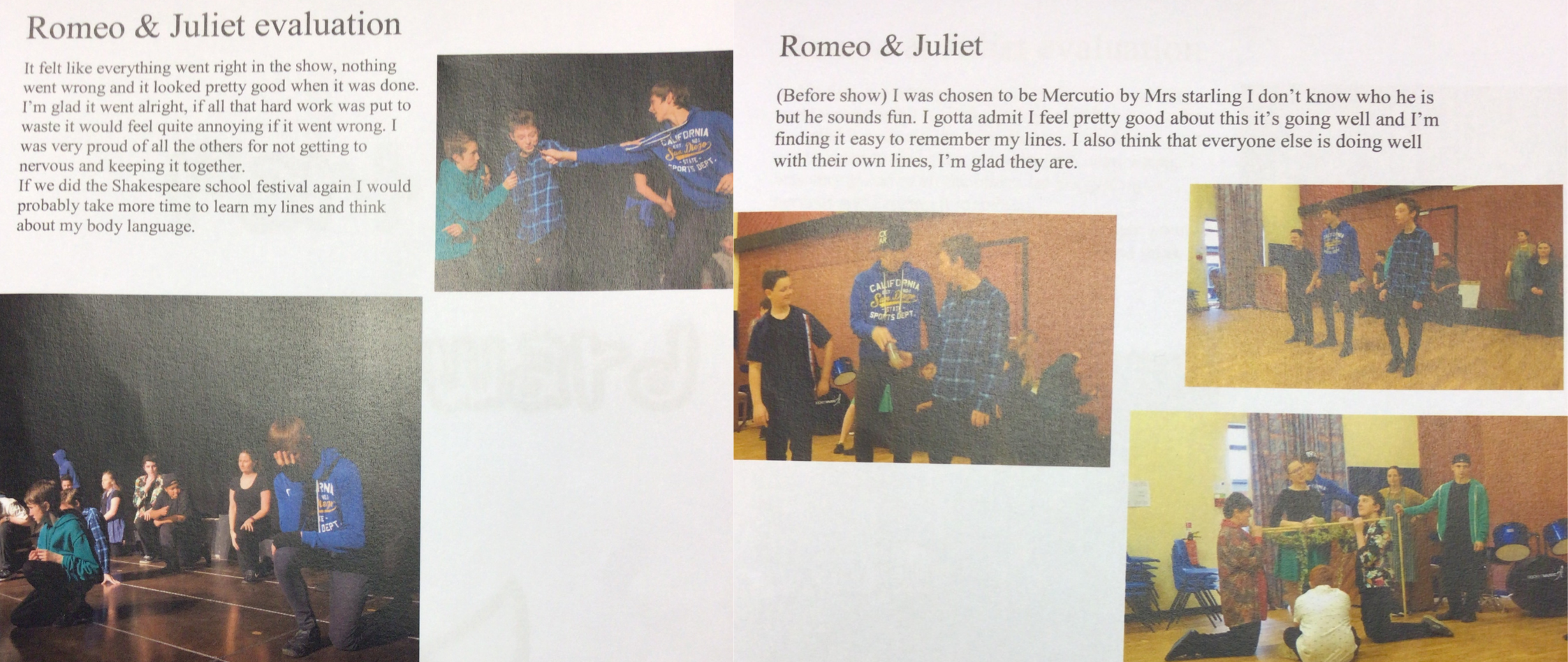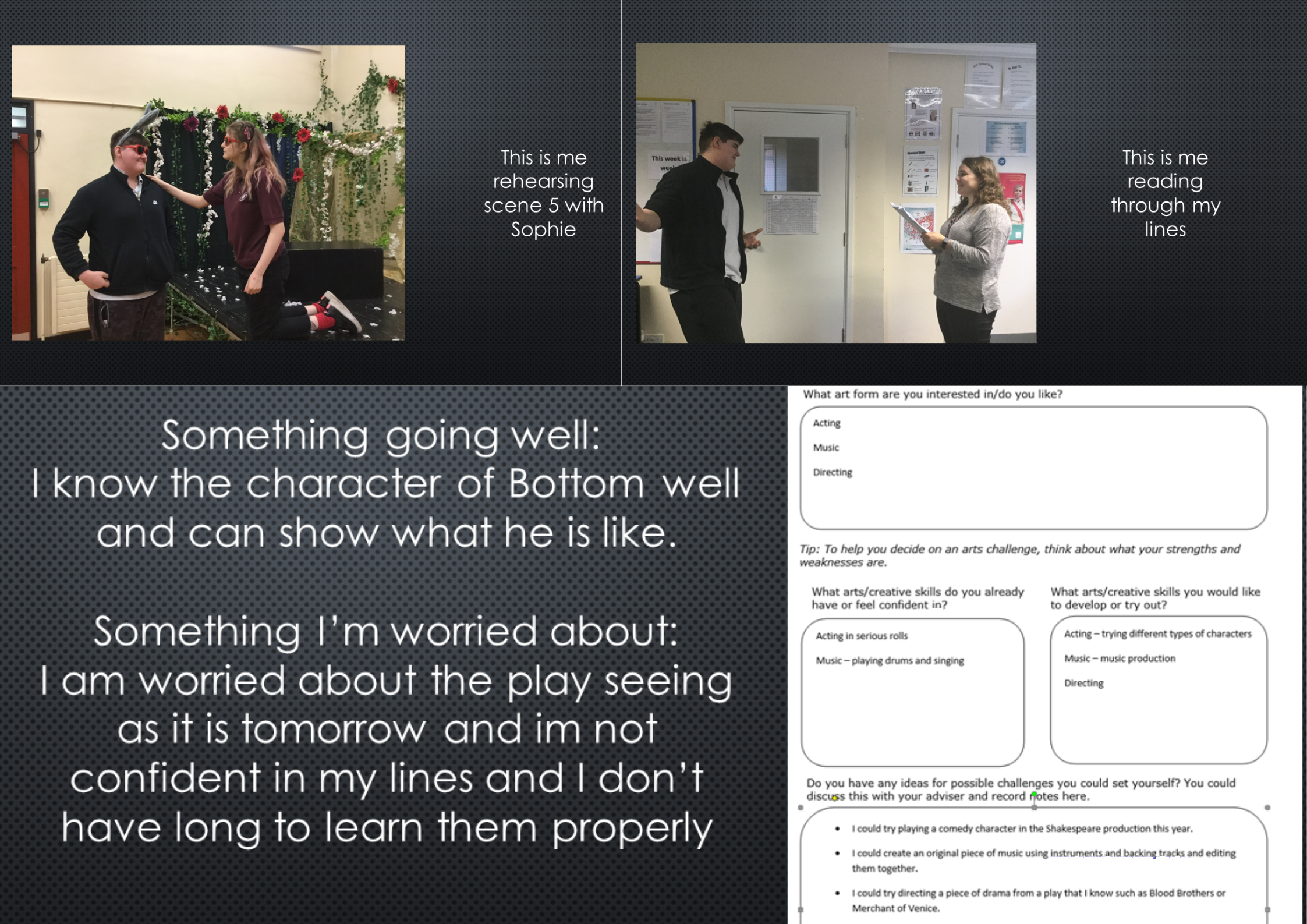
Arts Award and Coram Shakespeare Schools Festival
BY: Guest Writer
13 Nov 2023
In this blog we hear from Emma Starling, Head of Drama and Productions at High Close School, who used the Coram Shakespeare Schools Festival to successfully deliver an inclusive Bronze and Silver Arts Award programme, ensuring that the scheme was truly open to all.
I have always loved Shakespeare and when I heard about the Coram Shakespeare Schools Festival (CSSF), it seemed like a great opportunity to bring The Bard to my students. However, being an SEND school, many of the staff, parents and students were sceptical about how we could do this. It was clear to me that our students would be able to engage with Shakespeare, as long as we played to their strengths. We have now become a ‘Gold Shakespeare school’, having run the project for 8 years across both live theatre and film. We have an inclusive approach to the festival, where anyone who wants to take part can do so, without going through auditions.
We also run Arts Award at Bronze and Silver levels as part of the Key Stage 4 curriculum, and it was initially surprising to see how easily the CSSF process fitted with the different parts of the awards. The table below shows how we cover the different sections of Bronze Arts Award to meet the criteria:
Section |
Examples |
Part AExplore the arts as a participant |
Taking part in the production / company workshop |
Part BExplore the arts as an audience member |
Reviewing the other performances on the night |
Part CArts Inspiration |
Researching Shakespeare / famous actors from Shakespeare’s plays or film adaptations |
Part DArts Skills Share |
Lead games / warm ups in rehearsals - CSSF games are great for this |
For Part A, students could have an opportunity to be involved in the process, by taking either an on stage or back stage role. If you have students that don’t make it to the final performance but are part of the process, then as long as you have evidence of them taking part, you can guide them through the reflective work required of this part. This would mean that lots of students could achieve the award; making it more inclusive.
On the night of the festival performance your group will watch at least two other schools perform. This is a great opportunity for students to complete Part B, exploring the arts as an audience member. There are useful portfolio building templates on the run arts award resources site here that can be taken to the performance and completed there, or indeed after the event back at school.
Part C could be completed while students are waiting their turn in rehearsals by researching the life and work of Shakespeare, or famous actors that have performed Shakespeare’s plays.
For the Part D Skills Share, students could lead games or warm ups in rehearsals. As part of the CSSF CPD (continuing professional development) days the teacher/director is given a wealth of possible games to play which could be led by students, with teacher support if needed. The purpose of the skills share is so that young people develop life skills such as communication and planning. This ties in beautifully with the CSSF ethos.
These are some examples of the types of evidence we have provided to meet the criteria:


I also use the CSSF process to cover elements of Silver Arts Award. In the table below I have mapped out how the different parts of Silver could be met by the CSSF process and performance.
Unit 1 |
Unit 2 |
||
Part APlan an arts challenge |
Taking part in the production - deeper level. |
Part APlan a leadership project |
Fundraising / marketing assistant director / stage manager |
Part BImplement and review the arts challenge |
Keeping tabs on progress - video diary, rehearsal log, journal, photos, adviser meetings |
Part BPlan the practical issues |
Detailed plans, working with teacher director |
Part CReview arts events |
Reviewing other shows watched on the night - deeper level. Take to see a Shakespeare play. |
Part CEffective arts leadership |
Keeping tabs on progress - video diary, rehearsal log, journal, photos, adviser meetings |
Part DArts Research |
Talk with SSF facilitators about their job as part of the company workshop |
Part DWorking effectively with others |
Keeping tabs on progress - video diary, rehearsal log, journal, photos, adviser meetings, feedback from others |
|
|
|
Part ELeadership project review |
Detailed evaluation of process and experience. |
There are really useful Silver portfolio building templates available to download from the adviser resource hub for Unit 1 and Unit 2. You may wish to adapt the templates to suit the needs of your students. The CSSF project can set a great level of challenge for Unit 1 of the Silver award. If you have aspiring student directors or technical managers this could also potentially work very well for the Unit 2 Leadership Project. Here are some examples of student’s work where they are using our production of ‘A Midsummer Night’s Dream’ for Unit 1. This student chose to play the role of Nick Bottom. He carried out research into the role, rehearsed and even wrote his own prologue for the show.

I believe that Arts Award and CSSF fit together perfectly. There are a number of really useful mapping documents for all levels of Arts Award available on the CSSF website. If you are thinking of taking part in the festival anyway, then taking this approach means your students get recognition for their hard work by achieving a qualification! At our school, students who have achieved their Arts Award as a result of the CSSF has helped to celebrate the arts across the wider school community, as it becomes very visible. Arts Award also offer a discounted rate for schools that are taking part in the CSSF. What I have loved most of all, is that by combining Arts Award with the CSSF, it has been a wonderful opportunity to introduce students to Shakespeare, whilst also enabling them to achieve a qualification in the arts.
Coram Shakespeare Schools Festival supports schools to perform abridged Shakespeare plays in professional venues across the UK. Find out more here.
Related posts
BY: Guest Writer




Comments & Replies